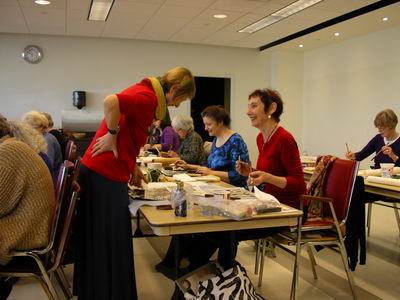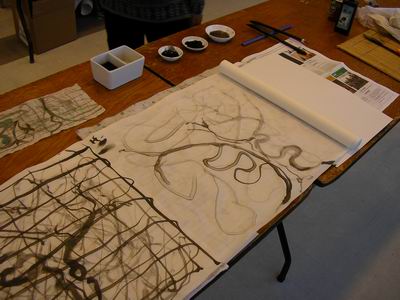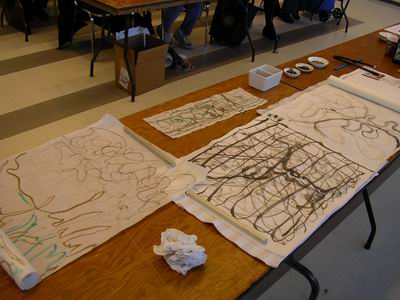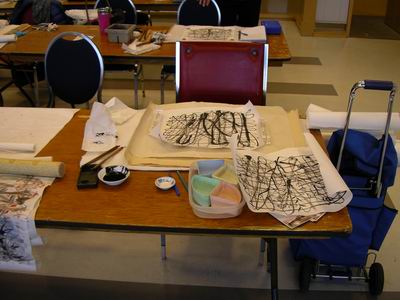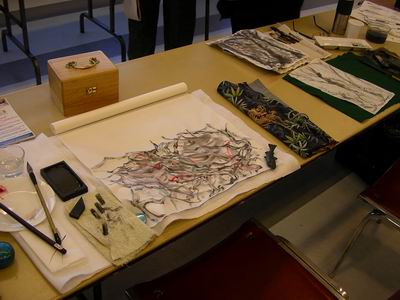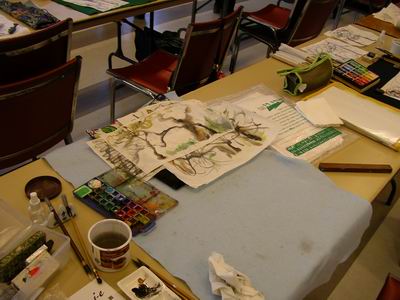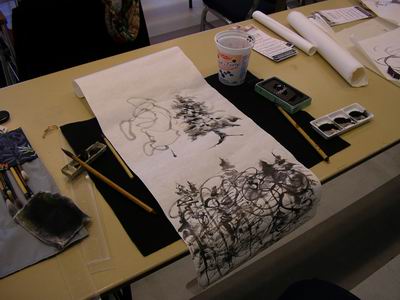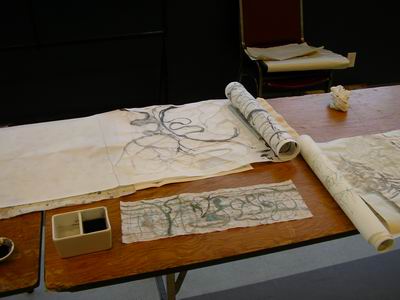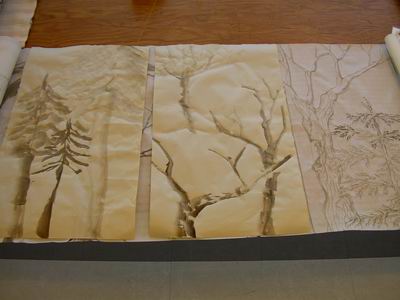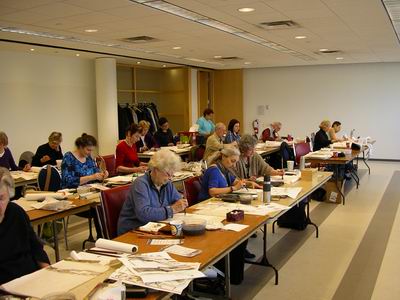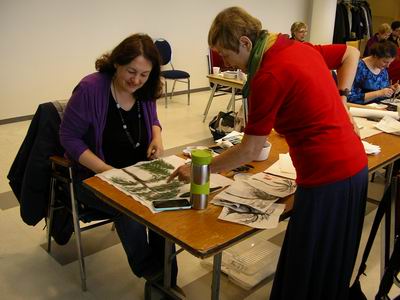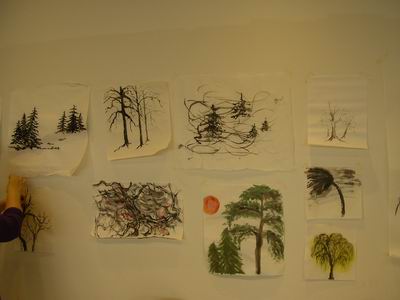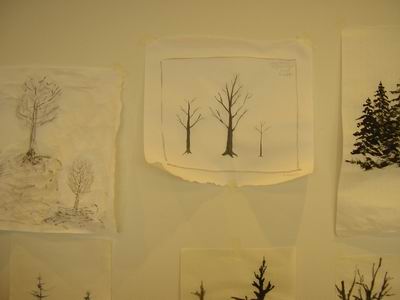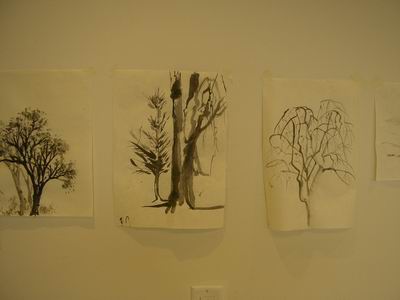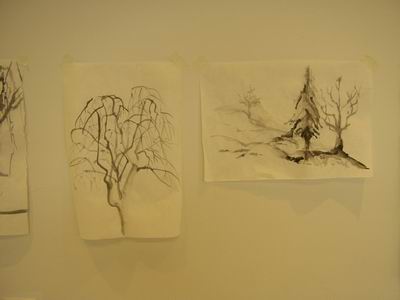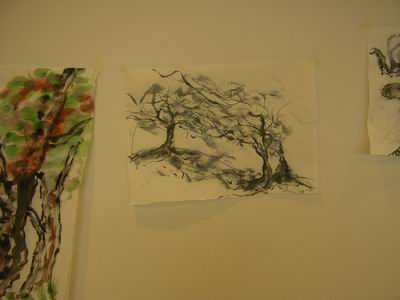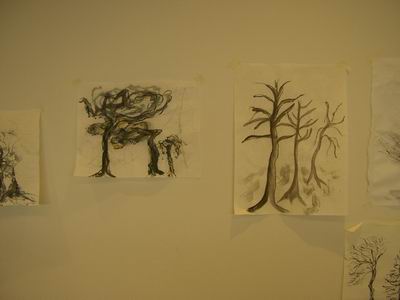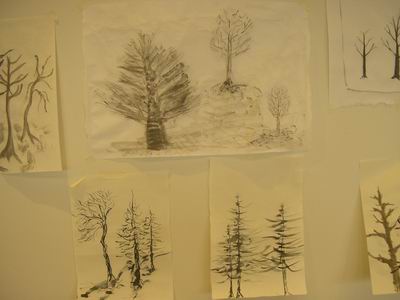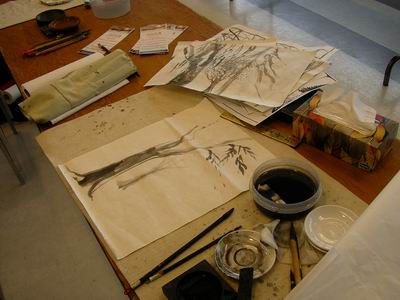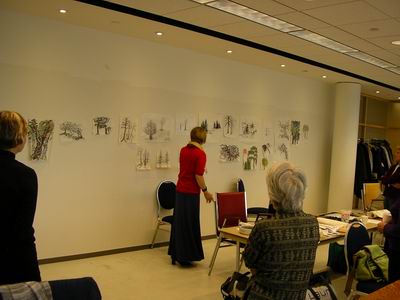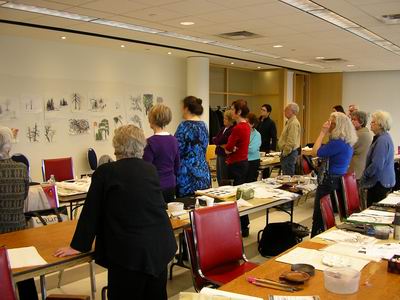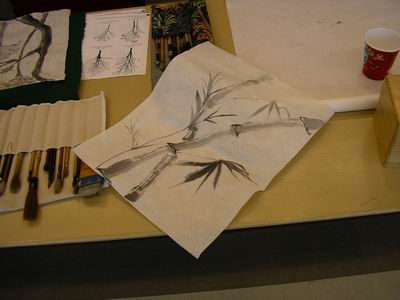Trees with Elisabeth Rittinger - March 12th, 2016
Trees are in many paintings, often defining a natural setting. Trees can be old and craggy with few leaves, or young and flexible and bursting with a green glow of energy. Elisabeth Rittinger began her workshop on trees, and how to use them effectively in a composition, by having the artists attending the workshop doodle.
Doodling means using curving, unplanned brush strokes. Use both hands simultaneously too.
Criss-crossing vertical and horizontal lines, as well as diagonal lines, were used to get artists painting and experimenting without too much thinking.
However, paintings of trees brought by Elizabeth Rittinger, who often signs them with Heffa, her artist's name, indicated where we were headed.
Initially, we had some energetic doodles.
Doodles can lead to abstractions that are interesting in their own right.
Trees then started to emerge from our doodles.
Doodling your way into a tree is one way to create a more dynamic or unexpected tree. The tree that appears is likely not the tree that you would have originally conceived.
As Elisabeth Rittinger demonstrated herself, just start with any line. Do not pause to think about what it will become.
Afterwards, start your tree thinking, building on your seemingly wild gestures.
We began focusing on painting our trees for the workshop.
Elizabeth Rittinger came around to each artist to point out how we might develop our trees further.
Photocopies of trees indicated how many types of trees there are!
We began assembling our trees on the wall for a show and tell session.
In classic composition, using three trees creates an effective composition. One tree dominates the painting, with the other two trees in complementary roles.
Various types of trees were painted, from oak and elm trees to pines.
Some artists had pines and hardwood trees together, as they would appear in a forest.
Trees interact with the wind, which leads to bending trees with interwoven branches.
Artists added emotional elements to their paintings.
Compositions of three trees created a dynamic interaction on our wall.
The workshop led to a deeper appreciation of the tree in a painting.
Elisabeth Rittinger provided an analysis of our tree collection.
The trees on the wall fascinated all the artists who contributed to them.
We left the workshop determined to have more trees, especially expressive trees, in our paintings.
The workshop was a valuable lesson on composition using the tree as a focal point.
